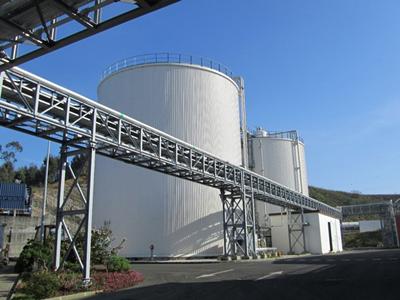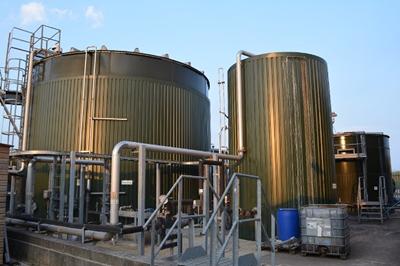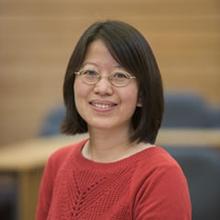Brief description
Bioprocesses use micro-organisms to carry out complex chemical reactions that allow wastes to be broken down and new products to be made from the building block materials that are released.

Explore this case study
The challenge
The challenge is to provide renewable energy and products from waste materials by the integration of bioprocesses with physio-chemical and electrochemical recovery and production techniques.
Wastes arise from all human activity and, once all possible measures have been taken to minimise their production in the first place, materials that were formerly regarded as pollutants are now often seen as valuable resources. The largest unavoidable waste is organic matter - the residues from agriculture, food processing, consumption and finally excretion. All of these have environmental impacts that can be mitigated through recovery and help to support a sustainable circular bio-economy.
What we did
One key area in our work focuses on anaerobic metabolism as a key transformation platform. In its simplest form this is the digestion of wastes to produce biogas, a renewable fuel. By manipulating and modifying this process we can produce a range of bio-products and energy carriers with enhanced characteristics in more efficient and manageable processes.
Bioprocessing alone can go so far, but the gains are far greater if an integrated approach is adopted. The scientific and engineering challenge is in creating effective multidisciplinary teams to develop new processes that can deliver the multiple goals of providing renewable energy and mitigating environmental impacts and climate change while maximising resource recovery.
Our impact
As a group we have worked on anaerobic digestion for over 20 years, and been pathfinders in new applications for this technology. We led consortium projects looking at agricultural crops for bioenergy production. The research produced useful assessment tools and the models derived are still widely applied. It also shaped our views on which resources should be used in this way, and since that time our research has focused on waste.
The EU-funded VALORGAS project was underpinned by research carried out for Defra and WRAP at a national level to support food waste recovery in the UK. VALORGAS gave a comprehensive evaluation of feedstock collection and digestion approaches across Europe, and developed concepts of energy footprint modelling and integrated process design to maximise biosecurity and minimise emissions.
VALORGAS also initiated a research pathway where we now look at the intermediate breakdown products from waste, for direct recovery or as precursors to higher-value products. This led to work on production of organic acids and alcohols and recovery of nutrients funded by EPSRC NIBBs (e.g. BioB3) and Newton Fund Institutional Links with Universidad Nacional de Colombia (FishRefine).
Increasing process efficiency and further engineering/materials advances also made it possible to look at low-temperature anaerobic systems for wastewater treatment. This was followed up in a successful European project (AmbiGAS) and an exchange of researchers with Vietnam funded by the Newton Link programme.
Recently our focus has moved on to include GHG mitigation, through the Industrial Biotechnology Catalyst programme where our H2AD project brought together an interdisciplinary team from three universities with three industrial partners to develop concepts for 'in-situ' biomethanisation - using anaerobic digestion coupled to electrolytically-produced hydrogen to maximise biomethane production as an energy carrier for industry and transport.
The facilities we used and partners we work with
We work closely with academic and industrial partners ranging from the water industry to the renewable energy sector. Our facilities comprise bioreactor laboratories used in the development of novel environmental technologies for water, waste and wastewater treatment and bioenergy production from prototype to commercially viable application, as well as an analytical suite.
Key Publications and media
Videos: Interview during workshop under Newton Fund Institutional Links project with Colombia: https://www.youtube.com/watch?v=OUTgdQPxFsU
Papers:
Tao, B., Zhang, Y., Banks, C., & Heaven, S. Title: Predicting pH rise as a control measure for integration of CO2 biomethanisation with anaerobic digestion. Published in Applied Energy. https://doi.org/10.1016/j.apenergy.2020.115535
Outram, V., & Zhang, Y. Title: Solvent-free membrane extraction of volatile fatty acids from acidogenic fermentation. Published in Bioresource Technology. https://doi.org/10.1016/j.biortech.2018.09.057
Jiang, Y., Zhang, Y., Banks, C., Heaven, S., & Longhurst, P. Title: Investigation of the impact of trace elements on anaerobic volatile fatty acid degradation using a fractional factorial experimental design. Published in Water Research. https://doi.org/10.1016/j.watres.2017.09.010
Serna-Maza, A., Heaven, S. and Banks, C.J. Title: Ammonia removal in food waste anaerobic digestion using a side-stream stripping process. Published in Bioresource technology. https://doi.org/10.1016/j.biortech.2013.10.093
Xafenias, N., Zhang, Y., & Banks, C. J. Title: Enhanced performance of hexavalent chromium reducing cathodes in the presence of Shewanella oneidensis MR-1 and lactate. Published in Environmental Science & Technology. https://doi.org/10.1021/es304606u
Banks, C. J., Zhang, Y., Jiang, Y., & Heaven, S. Title: Trace element requirements for stable food waste digestion at elevated ammonia concentrations. Published in Bioresource Technology. https://doi.org/10.1016/j.biortech.2011.10.068
Rashid, S. S., & Liu, Y.. Title: Comparison of life cycle toxicity assessment methods for municipal wastewater treatment with the inclusion of direct emissions of metals, PPCPs and EDCs. Published in Science of the Total Environment. https://doi.org/10.1016/j.scitotenv.2020.143849
Liu, Y., Maulidiany, N. D., Zeng, P., & Heo, S. Title: Decolourization of azo, anthraquinone and triphenylmethane dyes using aerobic granules: acclimatization and long-term stability. Published in Chemosphere. https://doi.org/10.1016/j.chemosphere.2020.128312
Liu, Y., Nilsen, P., & Maulidiany, N. D. Title: Thermal pretreatment to enhance biogas production of waste aerobic granular sludge with and without calcium phosphate precipitates. Published in Chemosphere. https://doi.org/10.1016/j.chemosphere.2019.06.104
Liu, Y., Lan, G-H., & Zeng, P. Title: Size-dependent calcium carbonate precipitation induced microbiologically in aerobic granules. Published in Chemical Engineering Journal. https://doi.org/10.1016/j.cej.2015.10.020
Liu, Y., & Tay, J-H. Title: Fast formation of aerobic granules by combining strong hydraulic selection pressure with overstressed organic loading rate. Published in Water Research. https://doi.org/10.1016/j.watres.2015.05.015
Links to external websites
Bioenergy and Organic Resources https://borrg.soton.ac.uk
Environmental Biotechnology Network led by Southampton https://ebnet.ac.uk
Related Staff Member
Related Staff Member
Related Staff Member
Related Staff Member
Related Staff Member
Related Staff Member
Team
Pilar Pascual-Hidalgo
Sailesh Karanjit
PhD students:
Feni Amriani; Fawaz Almuaddi; Jack Morton; Khaled Almoalimi; Maria Ramos Suarez; Mohammad Hassan Zamzami; Nopa Maulidiany; Seongbong Heo; Tararag Pincam; Thitirat Ditkaew; Xiaoqi Wen






